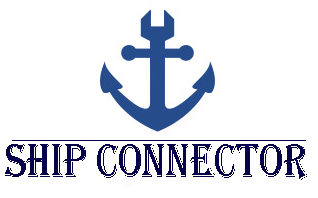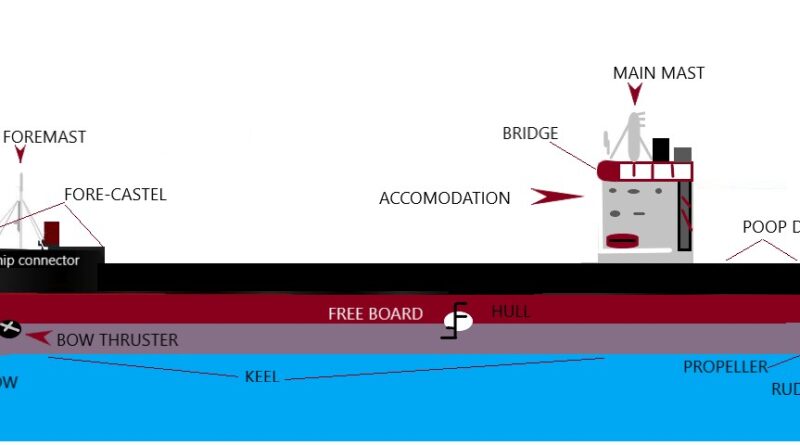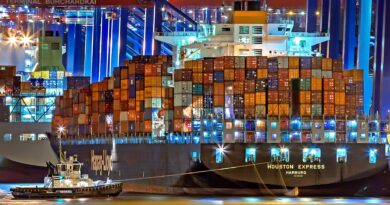Different parts of a ship & their functions
Contents
Different parts of a ship & their functions
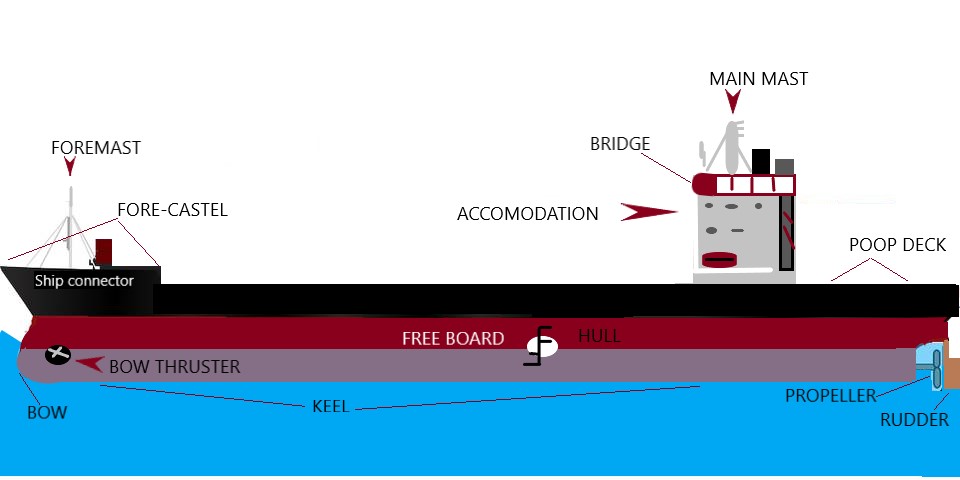
Bulbous Bow:
- Bulbous bow is the forward projected bulb like structure at the bow of the vessel.
- The purpose of the Bulbous bow is to cut the water flow around the hull, which helps in increasing the speed of the vessel,this structure helps reduce consumption of fuel and also helps mainting the stability of the ship.
Now days almost every ship comes with the bulbous bow
Stem:
- The Fore-most part of the ship’s bow is known as Stem of the ship.
- The flat keel extends up and connect to the gunwale to form curved edge called stem.
- Raked stems and plumb stems are two types of keel of ship.
- Raked is inclined at some angle to the waterline whereas plumb is perpendicular to the waterline.
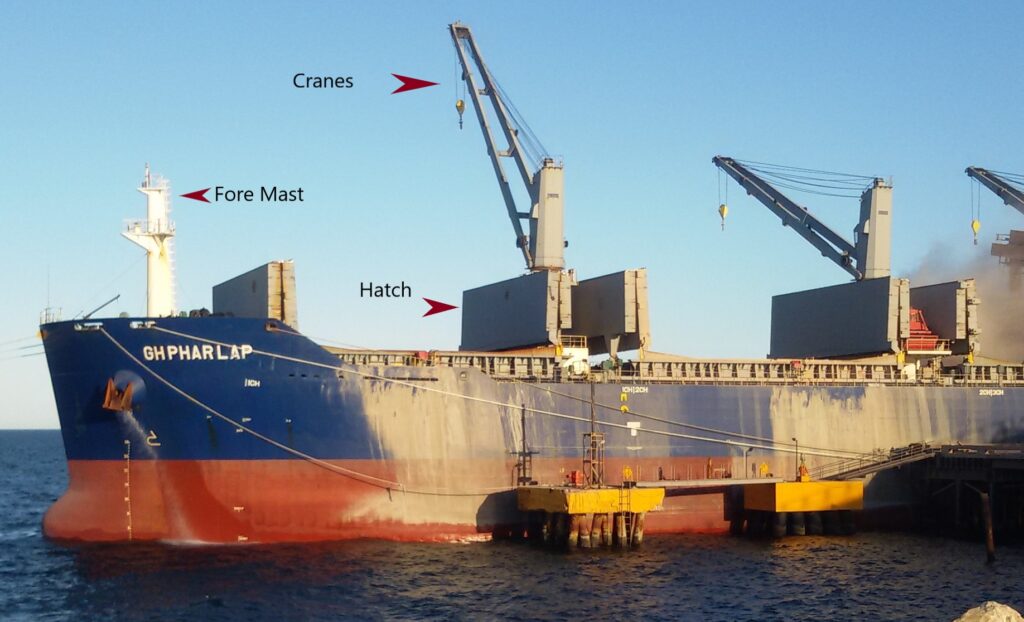
Forecastle:
- The forecastle also called as foxil is the foremost parts of the ship,its length is less than 7% of total length of the deck.
- Forecastle main functions is to hold anchor forward station
Foredeck:
The foredeck also called as main deck is the forward deck which runs from forecastle superstructure to accommodation.
Bow Thrusters:
- Bow thrusters is just a propeller, fitted on either side of the bow of the ship.
- It helps ships in easy maneuvering while ships approach or depart from sea port under dead slow speed in coastal waters. Bow thruster also known as tunnel thruster.
- Bow/side thrusters are either hydraulically or electrically powered and increase running cost of a ship to a some extent.
Paint Room:
- All paints thinners and hardner are stored in paint room which are placed in the forward part of the ship.
- Paint rooms are provided with special safety mechanism such as sprinkler system water tight doors fire alarm system smoke detectors etc.
- Some ships also have co2 release system.
Mast:
- Every Ship has Two mast The Fore mast and Main Mast
- Masts are elevated vertically to the Centre line of a ship.
- The main purposes of the mast is to provide good height to the navigation light,radio and radar aerials and scanners.
Cargo hold:
- Cargo holds are the enclosed space to load or store cargo/container .
- The cargo hold is found on dry bulk/container/Multi-purpose general type of ships and are located under the deck and the size and number of holds depend on the total length of the ship
Hatch Cover:
- Hatch covers or simply hatch are covers to the holds which prevents the cargo stored in the holds from any kind of spoilage, these hatch’s are air as well as watertight.
- The hatch covers are hydraulically operated and can be quickly open and closed.
Freeboard:
Freeboard is the length measured from the waterline to the deck plating(the upper edge) at side of the freeboard deck on amidships
Ballast Tanks:
- These are the tanks used to carry water, the water which is filled in these tanks are called as ballast water and used to maintain stability of the ship(most often when the ship is empty).
- Tanks are provided with anode plate to prevent them from corrosion, as sea water is highly corrosive.
Bunker tanks:
- Bunker tanks are the tanks on the ships used to store ship’s fuel and lubricating oils.
- Bunker manifold is the point from where shore oil hose is connected from there only the bunker is taken into the ship.
- High safety precaution is taken during bunker operations as the fuel is prone to catch fire.
Duct Keel:
Duct keel is used in double bottom hull ships and consists of solid plates joint together into a box shape and it allows pipes and other required services to pass throughout the length of the keel(watertight) from forward to aft .
It runs from collision bulkhead to forward engine room bulkhead
It consist of two center girder.
Related Article: keel of a ship and types of keel
Rudder:
- The rudder is a flat plate structure which helps in giving direction to the vessel, rudder is in the aft of the propeller.
- Rudder consists of rudder trunk, flap, rudder blade, hinge system, links and rudder carrier bearing.
- There are of three types of Rudder: Balanced type, Semi-balanced type and Unbalanced type rudder.
Propeller:
- Propeller is like fan having blades fitted on a central shaft.
- The blades rotate and produce energy It pushes the sea water backwards and, in turn, the sea water helps the ship in moving forward.
- The propeller is made up of aluminium, bronze, manganese which are corrosion proof
Stern:
- The Stern is the aft part of the ship it provides low resistance and high propulsion efficiency ,the stern is designed in such a way which helps reduction in the vibrations.
- Rudder and propeller are fixed to the lower part of the stern.
Poop Deck:
- Poop Deck are located in the aft part of the ship, Aft station is located in poop deck,Mooring winch Warping drums bitts and Aft mast is present on poop deck to facitiliate easy mooring stations
Bridge:
• The ship is controlled from the Ship’s bridge also called as wheelhouse, the wheel or the streering of the ship is located here.
• All the navigation equipments are placed here, with the help of the navigation equipment the ship’s movement is controlled ,sometimes also called as commanding station
• Deck machinery, main engine and ship’s navigation system can be controlled from bridge
• Duty officers keeps lookout watch from bridge and navigate the ship from bridge.
Monkey Island:
• Monkey Island is a deck which is just above the bridge (floor of a bridge)
• VDR capsule, AIS Tx/Rx antennae, Radar scanner, Sat C , communication devices, Halyards connected to the yardarm to hoist flags, weather vane, and the masts called as ‘Christmas Tree’ as it resembles Christmas tree and all navigation lights are fixed on this tree including ship’s aft whistle.
Funnel:
- A Funnel /Stacks is an exhaust system from where the engine and boiler smoke comes out.
- The logo of the shipping companies can be seen on funnel.
Accommodation:
- The accommodation -is the living area of the crew onboard. It consist of ships offices, cabins for crew, hospital, Gymnasium, recreation room for ratings and officers, common rooms, laundry ,galley and provision stores.
- Refrigeration system (for galley items) and air conditioning for accommodation.
Funnel:
- A Funnel /Stacks is an exhaust system from where the engine and boiler smoke comes out.
- The logo of the shipping companies can be seen on funnel.
Funnel Deck:
• The exhaust gases from engine exhaust room comes out into the atmosphere from funnel.
• Nowadays scrubber system is fitted for extra care while discharging shoot from the funnel to emit less pollution.
• These funnels installed inclined at a certain angle toward the aft to the Funnel deck.
Boat Deck:
- Types of Decks –Fore deck ,Main deck, poop deck, upper deck, lowers deck, Boat deck.
- The Boat deck- Generally Boat deck is the deck which has easy access to life boat during any kind of emergency ,life boats are stowed properly to boat deck.
Mast:
- Every Ship has Two mast The Fore mast and Main Mast
- Masts are elevated vertically to the Centre line of a ship.
- The main purposes of the mast is to provide good height to the navigation light,radio and radar aerials and scanners.
Flying Bridge:
- Flying Bridge or Bridge’s wing is just an extention of the main Bridge,it provides clear view of the forward as well as aft
- During approach/Departure it is very easy to monitor vessel movement from wings.during stations pilot and master stays in this area and give command to the duty helmsnman and duty officer
- Important Controls like Gyro repeaters,Anninometer Horn whisch are used for berthing and unberthing of the vessel are available here.
Emergency Generator Room:
- Emergency generator is used when the main supply of the vessel do not work due to any reason,there is separate room where this emergency generator is placed.
- Emergency generator is to be kept ready at all times and must be stand by and in ready to use condition even when the outside temperature is below 0°.
Ship Cargo gear (Cranes/Grabs):
• Cranes are used for loading and discharge of the cargo, ship’s store or provisions.
• Cranes can be electrically or hydraulically operated.
Mast House:
• It is a house-like structure on the upper deck.
• Cranes are mounted on mast houses and entry to cranes is through mast house.
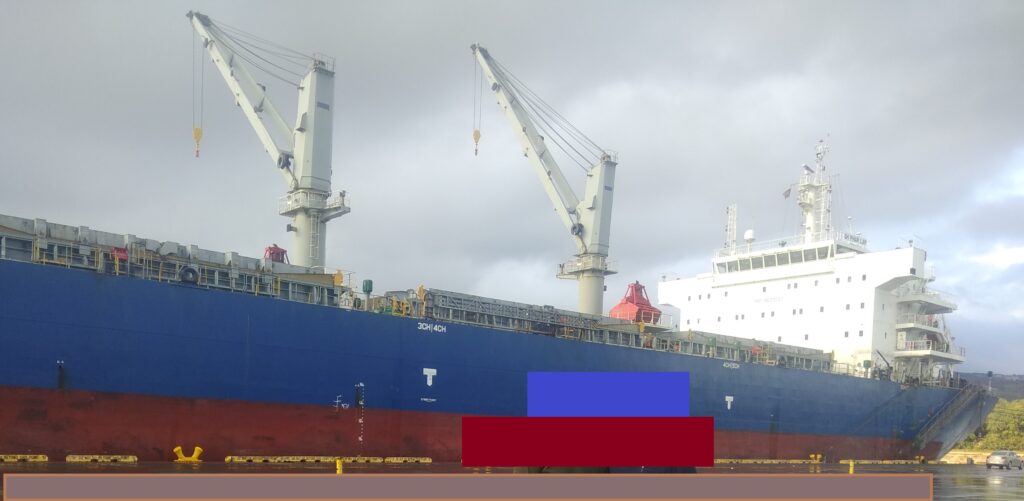
Different parts of a ship & their functions explained
Parts of a ship diagram

Section of a ship
Related Article: Keel of a ship and types of keel
Types of ships
Container Ship
Bulk Carrier
Tanker ship
Type of Tanker ships
Oil Tanker
Crude Oil Tanker
Product Tanker
Chemical Tanker
Bunker Tanker
Bitumen/Asphalt Carriers
Gas Carrier(LNG/LPG/CNG)
Passenger ships/cruise ships
Ro-R0 ships (Roll-On Roll-Off vessels
Ferries
Offshore vessels.
Related Article : Types of Merchant Navy Ships
